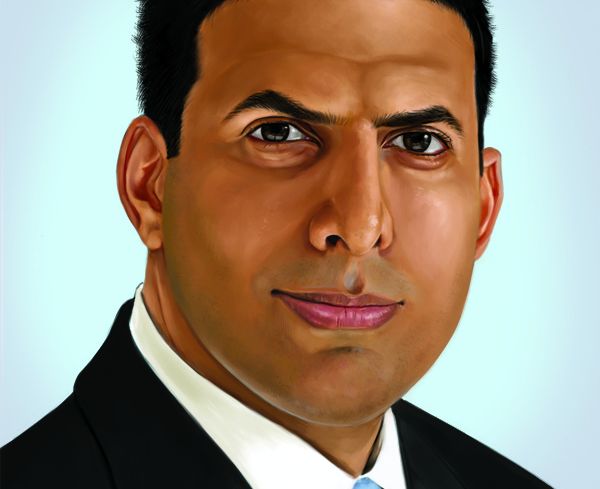
The way we shop is changing. The reasons are varied: our unfolding economic circumstances, the ever-increasing ease of online commerce and a shifting sense of what the retail experience should offer. For investors and lenders alike, limited foresight into the sector’s evolution implies unique risks. It also weighs heavily on the outlook for billions of dollars in legacy CMBS loans, maturing over the next several years. Those loans are overweighted to the small retail assets that have traditionally been the bread and butter of securitization.
A Consumer Economy
American consumers were slow to emerge from the financial crisis, hampered by the weak job market and disappointing wage and salary growth trends.
Nearly seven years after the previous peak, real retail spending is only now recovered in full. Spread across the growing American population, the average person is spending less today. It’s not that we are saving more. Rather, incomes have stagnated.
The freshest data from the U.S. Department of Commerce shows a decline in core retail sales during April 2014 and that, over the last year, growth in core sales has lagged its long-term average. The prospects for stronger consumer sentiment are tied to the labor market and demands on pocketbooks. In the case of the former, the next year should bring with it healthier job creation. A tighter labor market should see an improvement in wages and disposable income for a wider spectrum of families, alleviating some of the serious pressures on household budgets and supporting a slow increase in discretionary purchasing.
But rising salaries will not translate, alone, into new retail dollars. Retailers must compete with every other slice of the household budget, including housing costs that are generally rising, as evidenced by the apartment sector’s enviable net income trend. Whether we hold our purse strings tight or lose also depends on changes in perceived wealth. Higher home prices and stocks are contributing to the wealth effect, putting the savings rate back on track to its pre-recession record lows.
Although the near- and medium-term outlook is bright, retail lenders can ill afford complacency in their forward-looking assessment of market conditions. By the numbers, we are five years into the current economic expansion. In the postwar era, expansions have lasted less than five years on average. The longest was exactly 10 years, from 1991 to 2001. All else equal, today’s five-year loan will see recession before it matures. That gloomy prognosis coincides with the current visible deterioration in underwriting standards as lenders rediscover their appetite for risk. The increasing prevalence of interest- only periods is particularly notable for small retail properties, which will presumably reach term in an environment of significantly higher capital costs.
Change Afoot
As a driver of retail outcomes, the business cycle is dominated by more permanent changes in the way we shop and our expectations of what a desirable retail experience should involve. Not every retail location is Fifth Avenue. But it is clear from the recent first-quarter REIT investor calls that destination retail is garnering more attention. The shopper may not be acquiring goods during his or her visit to the mall or strip center, but services including dining and entertainment have proven comparatively resilient. For its stickiness, the health club could join the grocery store as a top-shelf anchor.
Lifestyle amenities appear to be the key to shopping centers’ survival at the moment. Outlet malls are also having a renaissance, as they have become more accessible by public transportation. Even here, experience amenities are front and center. At the Clarksburg Outlets at Cabin Branch, scheduled to open in 2016, an outdoor amphitheater will host concerts.
Without a strong lifestyle dimension, even well- anchored neighborhood and community shopping centers are assessing strategies for remaining relevant in their local markets. A grocery store is thought of as a strong defensive play, especially as online grocery shopping fails to develop serious traction in the fresh food aisle. A Whole Foods Market? Even better.
Combatting the Online Advantage
The battle to preserve market share is fought on more than one front. The Marketplace Fairness Act intends to restore balance to the retail sales market by taxing Internet purchases consistent with bricks and mortar. While the act would address the blatantly favorable treatment afforded online sellers, it will not succeed in disrupting their momentum. Shifts in consumers’ shopping habits that favor the Internet reflect much more than tax savings. Lower base prices, greater product variety and the convenience of shopping from anywhere are enhanced as online retailers develop logistics and distribution channels supporting shorter delivery times.
With or without a tax on Internet sales, electronic commerce will continue to eat at vulnerable categories of retail goods. Whatever the type of product or service, the focus on engaging the consumer in a compelling retail experience goes to the heart of what the Internet cannot provide. As disruptive technologies and malleable shopping habits allow online retailers to encroach further into retailers’ defensive positions, it is reasonable to explore ways that an e-commerce channel can complement rather than compete with bricks and mortar. The practical reality, however, is that not everyone can replicate Apple’s extraordinary achievement. The spoils will go to the innovator.
Sam Chandan, Ph.D., is the president and chief economist of Chandan Economics and an adjunct professor at the Wharton School. The views expressed here are his own. He can be reached at dsc@chandan.com.



